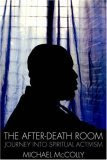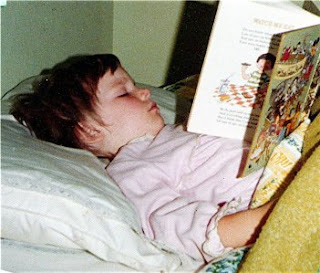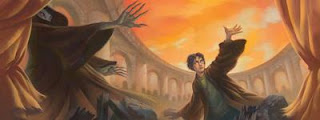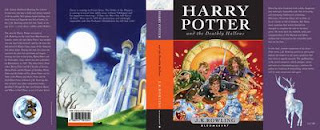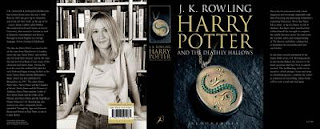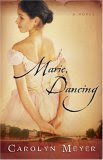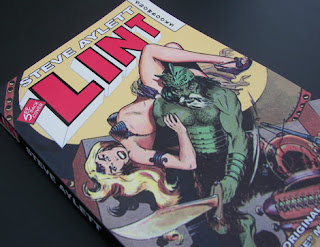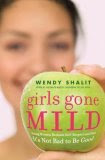Interview with Simon Van Booy, author of
The Secret Lives of People in LoveBy
Nancy L. Horner The first time I spoke to Simon Van Booy by phone, he told me about his youth in rural Wales. “I grew up around sheep,” he said. “Always sheep; lots of sheep.” The second time, I gave him very bad directions to the Barnes & Noble on Washtenaw Avenue in Ann Arbor, Michigan. The third time we spoke, he said, “I am now completely lost.” As it turned out, Simon was able to see the “real” Ann Arbor, the part with character, the funky and beautiful downtown area, thanks to my terrible directions and the emergency assistance of a spouse with a talent for navigation.

Simon parked on Main Street and we met at Main and Liberty, in front of one of the many Starbucks coffee shops, to introduce ourselves. He wore a white shirt with thin stripes, a pink striped tie, a navy blue blazer and a black cap with black frame glasses. Tendrils of dark hair escaped below his cap. Turning a circle, Simon suggested we go to the Greek place, The Parthenon, for coffee. He pointed out the statue in the window of our booth. “This is perfect,” he said, removing his cap.
Simon ordered coffee for himself, a Perrier for me. “The Greek make the best coffee. When you get to the bottom there are coffee grounds. It’s very strong,” he said. His coffee arrived in a tiny cup, liquid sloshing onto the saucer. The waitress apologized and Simon warned her that he would probably pick up the saucer and drink it. He loves his Greek coffee. He ordered moussaka and dolmades, and when they arrived he pushed a plate toward me. “This is for you,” he said. “I’m always mothering people. He split both dishes with me. When my Perrier glass ran low, he picked up the bottle and refilled my cup.
Simon chattered a mile a minute. He’s easy to talk to and, as expected, has a big heart. I asked him if he’s always written. “Always, always,” he said. “I feel car sick if I don’t.”
He told me his grandfather was the news agent for Dylan Thomas, that when he returned for his grandmother’s funeral in Wales, he closed his eyes as the funeral procession passed by so that his memory of home wouldn’t be replaced.
Simon has lived in a number of interesting places and spoke so rapidly that I couldn’t seem to get down the order of where he lived and when. He’s lived in Oxford and London, Kentucky, Paris, Athens, and now New York City. His smile is shiny and white, “not a very British” smile, because he was in an accident, his teeth knocked out and replaced.
He told me that Athens is dangerous because it‘s home to many refugees. “They carry guns,” he said. “I was robbed in Athens at gunpoint. It was midnight and I took a different path from my usual route, through a park. They held a gun to me and patted me down, stripped me of everything they considered valuable. I don’t know if the gun had bullets, but the man who took my wallet came back. After the man who held the gun on me left, he came back and gave me the picture of my girlfriend from my wallet.” Simon patted his heart and said he wondered what that man’s story was. He must have had some great love to have understood, to care to bring back that photo.
I asked him about the story, “Little Birds”, the first story in
The Secret Lives of People in Love and one of my favorites.
“Didn’t you love Michel?” he asked.
“I did,” I said. “And, I wondered about the child. Did he have a name?”
“He was nameless,” Simon explained. I told him I thought so. I didn’t remember seeing a name, just “peanut”. The story adoptive father Michel has told his child about how he was found in a subway station is elaborate but, I asked, was it fabricated by Michel?
Simon told me that I’d gotten it right. The story Michel told his little peanut is wild enough for other people to see it’s impossible; it can’t be true. And, yet, the boy is so firmly convinced that when the train stops at the subway station where Michel says he was found, he “remembers” the station. Michel has planted a beautiful history in the mind of the child. “What matters,” Simon told me, ”is that he has so much love for this child, not where he came from.” Simon mentioned that one of his reviewers commented upon the fact that all the children in his stories are loved and cared for. I nodded. Maybe that’s one reason that each of the stories -- in spite of the fact that they often involve pain and loss -- retain an aura of hope.
I asked him if his characters are based on reality. The Russian shoemaker, he said, is real. He fixes Simon’s shoes; he lives in New York.
I asked if
The Secret Lives of People in Love is his first book. He took my copy and opened it up. It’s his second book, he said, but see . . . the first was absorbed into the second.
But he’s widely published, I added, in major magazines. “I’ve sold every story I’ve ever written,” he told me. “But, for every sale I’ve had 76 rejections.”
“You keep track?”
“Yes.” Simon told me that number may not be precise, but it’s close.
I ask him how he ended up living in so many wonderful places. He replied that people ask him to come live in their country and write about it. “For some reason I’m dear friends with several diplomats,” Simon told me. “I would love to travel to different countries, meet locals, and then write about their triumph and tragedy. Of course, this requires knowing some language, so I plan a year or two in advance and then study the language. . . . I also love strange food and will wear anything.” He has a story he wants to set in Wales and he plans to move back to Wales, at some point, so he can write the story, but “won’t be leaving New York any time soon."
The weekend before we met, Simon acquired an agent because the
L.A. Times wrote a spectacular review that garnered his book a lot of attention. Having an agent, he said, could get him some exposure. Since the review, he had spoken to people about movie rights. He said he was thrilled and surprised that such a great review came from California, that he was pleased to know they actually read and it’s not all just movies and breast implants. He told me silicone breast implants make great paperweights and we both laughed at the thought of someone explaining a breast implant holding down papers on a crowded desk.
I asked Simon if he has a routine. “My routine is to not have a routine,” he said. He isn’t, “one of those people who can set a time to write.” If he tells himself he must sit down to write, he can’t write a thing. He carries a notebook everywhere and takes notes.
But, does he have any habits or rituals? “I must have a desk at a window and an uncomfortable chair (or I fall asleep),” Simon said. “I drink endless coffee or green tea while I’m working. I work best between 4AM and 11AM, which means going to bed early. If I’m going to write, I have to wake up alone. I don’t drink anymore because it interferes with the process. I haven’t had a drink in almost eight years. Without solitude and sobriety I wouldn’t write a word.” He went on to say that he understood why writers “rent hotel rooms or find a shed in the middle of the forest”, and that he “even considered the long term parking lot at the airport,” when he was living with someone. “The most important element to my process is silence, so after listening to some music, maybe Satie or Pablo Casals, I slip in my earplugs and start.”
How does he begin a story? What sets off the spark? “I always start with one character, and then I write to find out what their story is. I often wake in the night and think of them. They just won’t go away until I’ve finished a piece. I can feel a character’s heart moving around inside of mine. It’s like having a relationship with an invisible person, though often they feel more real than people around me.”
And, how does he know when a story has ended? “This might sound odd or precious, but if I don’t cry, I know the work is rubbish. If my characters’ stories don’t move me to tears, then how could they possibly affect my readers?
Apparently, his method works. I kept a box of tissues nearby, while I read the stories in
The Secret Lives of People in Love. A friend who read the book agreed that most of his stories moved her to tears. “I love his phrasing and allusions,” she said. “Just beautiful.” She admitted that she still wells up just thinking about the Indian gentleman who sets a young boy and his father on the path to healing in “Where They Hide is a Mystery.” That makes three of us.
We talked about television. Simon gave away his television set three years ago and my family has gone without cable or satellite service for at least the same length of time. “People are always trying to give me one,” he said. He told me about how people in New York proudly scrounge things from the trash, that there’s a kind of bartering system in New York. If you see something of value, you can have it. But, you must hurry. He has a friend who saw three beautiful chairs sitting by the garbage. Someone told her, “You have 15 minutes.” The woman hailed a cab, put the chairs inside and took them home, then returned for dinner.
“It’s really a source of pride,” he said, “for someone to obtain something wonderful from the curbside on garbage day. They proudly tell you they found this beautiful thing in the trash. I have a 9-foot stainless steel table that I got that way. A restaurant had put it out at the curb. They weren’t going to use it anymore.” He emphasized it doesn’t matter how wealthy a person is, that it’s a source of pride to have found some treasure in the trash. And, what of Simon’s has ended up at the curb? All but “the bed, a desk, a chair, A Himalayan crystal (with a light bulb inside), and two small trees” were recently removed from the place he likes to write, in his bedroom, as he found even a penny on the floor or a picture on the wall too distracting. The possessions he left at curbside were “gone in 5 minutes,” he said.
Simon has also written
Pobble’s Way, a children’s picture book due to be released in 2008 with Flashlight Press, and is currently working on writing a novel. “People tell me to write a novel -- that if I write a novel they can sell it,” he told me. “But, I couldn’t because my characters told their stories and then left.” He only recently figured out a technique that works for him, writing each chapter in a way that it can stand alone, yet tells a part of the larger story.
I mentioned that he’s unusual in having people tell him to write something so they can sell it. “You mean I’m lucky,” he said.
He wrote down the name of the writer he most admires, Anne Michaels, “the most brilliant writer living, today, and she’s in North America. She’s Canadian,” he says. “And, she’s a recluse. I would give a kidney to her.” He paused. “Not that I don’t value my kidneys.”
Simon is most touched by composers, though, “especially Bach” and “I have also been heavily influenced by Erik Satie. . . . 90% of the books I start I never finish. Books I do finish I will read regularly for the rest of my life. I have a special shelf for these writers.”
You can find Simon at his website:
http://www.simonvanbooy.com/His MySpace page:
http://www.myspace.com/simonvanbooySimon’s favorites:
Dubliners by James Joyce, the complete works of Flannery O’Connor, the complete works of Emily Dickinson, The Jakarta Tales, Poems of Philip Larkin,
Marcovaldo by Italo Calvino,
The Gift by Hafiz,
Wings of Courage by George Sand (retold by Barbara Wersba), everything by Rilke,
Death in Venice by Thomas Mann, the complete works of Shakespeare and all of Marcel Proust.




